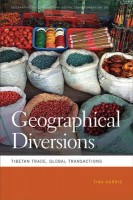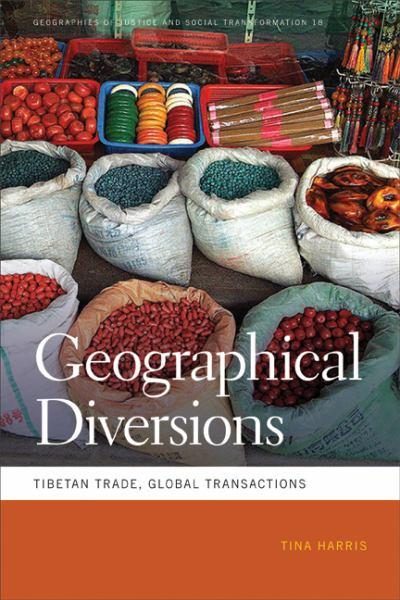 Author: Tina Harris
Author: Tina Harris
Publisher: The University of Georgia Press – 189
Book Review by: Sonu Chandiram
When we talk about global trade, we visualize in our minds the large or macro picture. We compare the gross domestic product or GDP of the countries involved in a region for example. And when we discuss bilateral trade between nations, we compare average annual incomes of individuals in those countries, and the volume of total export and import of those two trading partners.
Rarely is there any discussion of trade routes, the various products, the people doing business and the languages they use in transactions, and other elements of the myriad little pictures, such as cultures, and the like. In other words, the various elements of the micro – as opposed to the macro – view.
Tina Harris, a sociologist and anthropologist, does just that in this unusual and revealing book about Tibetan trade routes. In its blurb on the back cover, Geographical Diversions is described as a book “working at the intersections of cultural anthropology, human geography, and material culture.” In it, the author “explores the social and economic transformations taking place along one trade route that winds its way across China, Nepal, Tibet and India.” Its focus is on two generations of traders who exchange goods such as aprons called pang gdan, sheep wool, and lately, household appliances.
There are national boundaries and there are trade areas. The traders do not necessarily work within national boundaries but in trade areas that cover portions of two or more countries. In this book, four countries are covered. The author states that there may be governmental tensions when it comes to national boundaries that are perceived as fixed. But traders move around boundaries through ground transportation on the basis of business opportunities, profit motives, price differentials. Those matter most.
We all have many and differing ideas about globalization. Many business people welcome it as a smart means of sourcing labor and materials from countries that offer great value, as well as markets for finished products made in their home countries. But others, such as government officials, politicians and labor unions in the United States, oppose (or pretend to oppose) globalization as it takes away American jobs.
Also, capital that would be used to make products in the U.S. (and create jobs) and increase its GDP, is exported to other countries such as China and India, which have gigantic, untapped markets, faster rates of economic growth, lower income taxes, plentiful supply of educated labor at competitive rates, and other incentives that attract money.
A further description of Geographical Diversions is provided as a book that “challenges globalization theories based on bounded conceptions of nation-states and offers a smaller-scale perspective that differs from many theories of macro-scale economic change.” Again, the phrase “bounded conceptions of nation-states” refer to, in my opinion, views typically held by national leaders who hold trade protectionist views and try to impose strict barriers to imports in the name of saving local jobs from disappearing and local businesses from closing – businesses that cannot compete on the global stage that abhor and fear globalization.
This book is refreshingly different than others on international trade and even bilateral trade in that it takes a micro view of trade routes spanning China, Nepal, Tibet, and northern India. It discusses such topics as handicrafts and handlooms; maps, market places, and middlemen; new economic geographies to new expansion projects in infrastructure; products and pricing; re-openings and restrictions; silk roads and wool routes; and trade and territory. Read this book to gain a new perspective on trade and trade routes in the Himalayan region.
Tina Harris is an assistant professor in the Department of Sociology ad Anthropology at the University of Amsterdam







